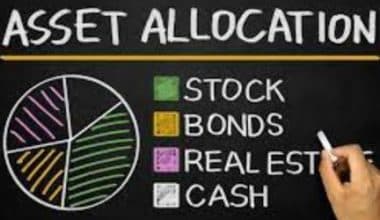An investment always involves spending something now, whether it’s time, effort, money, or an asset, in hopes of getting back more than what was put in. For instance, an investor might buy a financial asset right away with the hope that it would provide income later on or that it could be sold for a profit at a higher price. In this article, we will be discussing all you need to know about investments and the basics of investing.
What is an Investment?
A purchase made with the intention of creating income or capital growth is known as an investment. An asset’s value increasing over time is referred to as “appreciation.” When a person invests in a good, they do not intend to utilize it as a source of immediate consumption but rather as a tool for future wealth creation.
What is an Investment in Business?
meaning investing capital to conduct business through the creation of a business organization, making capital contributions, purchasing shares of stock, or making investments in the form of contracts or investment projects.
indicates an investment made in conjunction with, or that otherwise has a direct relationship to, the business, provided that no default or event of default is ongoing at the time the investment is made, or that it is not reasonably anticipated that the investment will cause or result in a default.
How Investments Operate
The purpose of investing is to provide income and build wealth over time. Any method for producing potential future revenue might be referred to as an investment. Buying bonds, equities, or real estate property are a few examples of this. You can also buy and think of as an investment a property that can be used to make things.
Different Investments
There are a lot of ways to invest. For example, replacing the tires on your car could be an investment because it will make the car more useful and could increase its value. People use the common types of investments listed below to make their money grow.
#1. Stocks/Equities
A share of stock shows how much of a public or private company someone owns. If the investor owns stock, they may be able to get dividends that come from the company’s net profit. Its value may increase and be sold for financial gains as the business grows and more investors show an interest in purchasing its stock.
#2. Fixed-Income Securities and Bonds
Bonds are investments that usually require an initial payment and then pay out a set amount every month for the life of the bond. d. The investor then receives their original investment back when the bond matures. Bond investments are a method for some entities to raise money, much like debt. Bonds are often issued by businesses and governments, and investors can buy them to receive interest.
#3. Mutual Funds and Index Funds
Index funds, mutual funds, and other types of funds often put together different investments into one investment vehicle, so investors don’t have to pick each company to invest in separately. Instead of researching and choosing each company individually, an investor might purchase shares of a single mutual fund that owns small-cap, developing market companies.
What is An Investment Property
An investment property is a piece of real estate that has been bought with the hope of recouping the cost of the purchase through either rental income, a potential sale of the property, or both. An individual investor, a group of investors, or a business may be the legal owner of the property.
A real estate investment may be a long-term project or a quick investment. With the latter, investors frequently participate in “flipping,” which involves purchasing real estate, remodeling or renovating it, and then quickly selling it for a profit.
What are the Four Types of Investment?
Even though stock investments are our primary focus at MyWallSt, it is critical to understand the distinctions between these four categories.
#1. Cash
Some people say that there is a “war on currency” going on because companies like Block (NYSE: SQ) and PayPal (NASDAQ: PYPL) are trying to make cash obsolete. However, whether it is in paper or digital form, money will probably always have a place in the economy.
The four main investment types all have varied potential returns, but cash investments, which include standard bank accounts, high-interest savings accounts, and term deposits, often have the lowest potential returns.
#2. Settled Interest
The one that investors may be most familiar with is the “bond” investment. In essence, the government has borrowed money from willing investors on the condition that they repay it with a fixed interest rate.
Federal Treasury bonds are the most well-known in the United States. Treasury bonds are fixed-rate securities issued by the US government with maturities ranging from 10 to 30 years.
Because they typically offer smaller potential returns and lower levels of risk than shares or property, bonds are regarded as defensive investments. Although not the only fixed-interest investment option, government bonds are arguably the safest because they essentially guarantee a fixed return rate for the specified period.
#3. Property
Property is seen as an extremely risky investment for growth. This is due to the fact that the housing market’s price can drastically increase or decrease over time, as it did in the period leading up to the 2008 Economic Crash.
In addition to investing indirectly through a real estate investment trust, one can do so directly by purchasing real estate (REIT).
Finally, we come to the investment strategy we are all familiar with: shares. You can own a piece of either Microsoft (NASDAQ: MSFT), a reliable and stable company, or Beyond Meat (NASDAQ: BYND), a risky company with the potential for rapid growth.
What is the Main Purpose of Investment?
Really, the solution is fairly straightforward. Your investments must assist you in achieving your life goals. Both short-term and long-term objectives are included in this.
And they differ from person to person. One investor might want to put money aside for their first home, another investor might want to start a retirement fund, and yet another investor might want to provide for their family.
How do Investment Work?
Understanding how investments work can help you develop a strategy to achieve your long-term objectives, such as saving for retirement and college.
A excellent strategy to prepare for the unexpected and move closer to greater financial goals like retirement is to save money away as you can. Most people choose to either save money or invest it, or both.
You likely understand how saving works. How does investing operate, though, and how do you choose your investments?
#1. A Savings Account for Education
These, like a 529, allow for savings and profits that can be utilized to cover qualified school costs. There are tax benefits and a choice of allocation in funds that include securities like stocks and bonds.
#2. A Brokerage Account for Investments
You personally transfer money to a brokerage company and select your own investments, such as stocks. Although there are no tax benefits and no loss protection for your money, there may be greater freedom for withdrawal than with a retirement investing account.
How do I Invest my Money?
#1. Determine How Much Assistance You Need
When you invest, you have a variety of options for getting assistance. Many people trust their money to a financial counselor or a mutual fund manager because they don’t want to take the time to learn how to invest on their own.
#2. Determine How Much you want to Invest in
Choosing how much money you wish to invest is the next step. You decide how much money you want to invest, and it varies for each person.
I’ve addressed a few often asked issues concerning saving vs. investing, what percentage of your money you should invest, how often, and if you can get started with just a little in order to give you a solid idea of how much you should invest.
#3. Decide Where to Invest Your Money
It’s time to choose where to invest your money—for the long term—after you feel comfortable with the level of assistance you have decided to accept or reject and the sum of money you want to invest. You have a lot of choices when determining where to put your money.
What is an Investment Property
Non-primary residential properties are those that are used as investments. They produce revenue in the form of dividends, interest, rents, or even royalties that is separate from the property owner’s primary line of work. Additionally, the use that is made of an investment property significantly affects its value.
Types of Investment Property Residential
Investors frequently use rental properties as a source of extra income. Rent payments might be made each month by an investor who buys a house to rent to tenants. These could be single-family homes, apartments, townhomes, condominiums, or other kinds of residential buildings.
#1. Commercial properties
They generate income don’t always have to be houses. Some investors, particularly businesses, buy commercial properties that are utilized only for business. These properties may require more upkeep and renovations, but the benefits may outweigh the costs. This is due to the fact that these properties frequently have higher rents on their leases. These structures might be places for retail stores or housing complexes operated by businesses.
#2. Mixed-Use
A mixed-use property can be used for both residential and business uses at the same time. For instance, a building might feature residential flats up top and a retail outlet on the ground floor, such as a convenience store, bar, or restaurant.
#3. Financing Investment Property
Borrowers who obtain a loan for their permanent house have access to a variety of financing choices, such as FHA loans, VA loans, and conventional loans, but it might be more difficult to obtain financing for an investment property.
What is an Investment Return
An indicator of an investment’s profitability is return on investment (ROI). ROI measures the effectiveness of an investment by comparing the amount you invested to the amount you earned. Let’s examine how it is applied by both enterprises and private investors.
What is an Investment Bond
Governments or businesses utilize bonds, commonly referred to as “fixed-income instruments,” to raise money by borrowing from investors. Typically, bonds are issued to raise money for particular projects. In exchange, the bond issuer agrees to repay the investment over a specific time period, plus interest.
Municipal bonds are sold by a city, town, or state to raise funds for the public. works initiatives like building hospitals, roads, and schools. Also, its interest is tax-free, in contrast to interest from corporate bonds. Municipal bonds come in two varieties: revenue and general obligation.
What is an Investment Portfolio
A set of financial assets owned by a person, collectively known as an investment portfolio may comprise bonds, equities, currencies, cash and cash equivalents, and commodities. It also refers to a group of investments that an investor makes to make money while making sure that their capital or assets stay safe.
One of the most fundamental ideas in business and investing is a portfolio. It’s a phrase that, depending on the situation, might mean several things.
Different Types of Portfolios
#1. Portfolio of Growth
A growth portfolio, as its name implies, seeks to foster growth by taking bigger risks, such as investing in expanding industries. Growth investment-focused portfolios often have bigger potential returns but also higher potential risks. Investing in young companies with greater growth potential than larger, more established organizations is a common practice in growth investing.
#2. Portfolio of Income
An income portfolio, in general, is more concerned with getting consistent income from investments than it is with focusing on prospective financial gains. As an illustration, consider purchasing stocks based on their dividends as opposed to their history of share price growth.
#3. Value Stockpile
An investor for value portfolios benefits from purchasing affordable assets by valuing them. They are especially helpful when the economy is struggling and many firms and investments are having a hard time surviving. Investors then look for businesses that have the potential to make money but are currently valued below what analysis would suggest is their fair market worth. Value investing, in other words, focuses on locating deals in the market.
Conclusion
The stock market is the investment option with the highest potential for profit, but you can’t just blindly invest your money in stocks selected at random and expect to see a profit.
Related Articles
- WHAT ARE INVESTMENTS? Importance, Types, and How It Works
- High Yield Investments: How to Spot High Yield Investments (With Best Options Updated!)
- GOOD INVESTMENTS: Best 15 Options to Start Now!!! (Updated)
- BEST LONG-TERM INVESTMENTS IN 2023
- PORTFOLIO MANAGEMENT SOFTWARE: Top Investment Software In 2022






